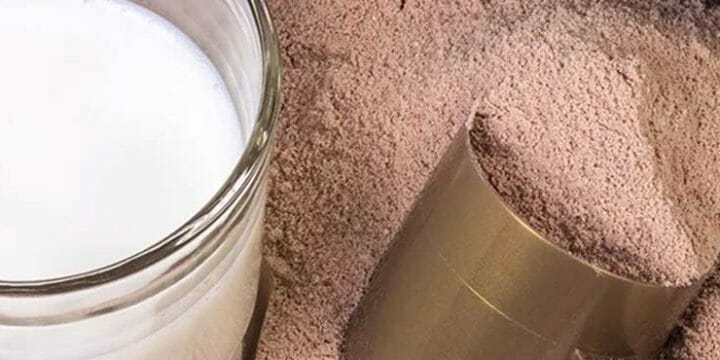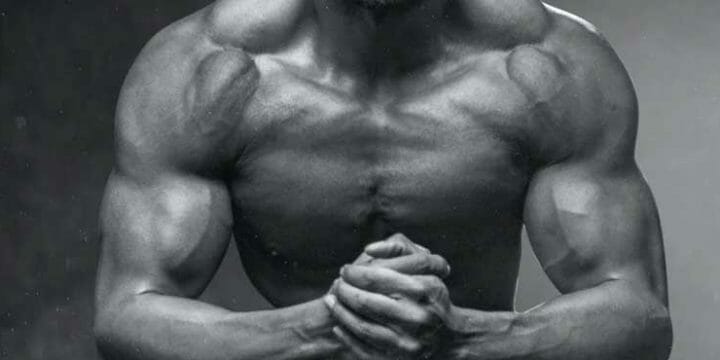The push-up is a flexible, bodyweight exercise that for most people when executed correctly, can offer so many perks.
Whatever fitness level you're in, there is a type of push-up to suit your exercise capacity and meet your body goals perfectly.
So, we did all the guesswork to walk you through 10 powerful variations of push-ups and their correct body forms to ensure that they work effectively to build strength for your chest and upper body muscles.
Quick Summary
- The best push-ups for a bigger chest are wide grip push-ups, close hands push-ups, diamond push-ups, incline push-ups, decline push-ups, and clap push-ups.
- Some mistakes to watch out for when performing push-ups include locking elbows, improper head posture, and hip drop.
- The National Institutes of Health states that keeping a straight spine during push-ups, similar to training in unsteady conditions, is key to increasing core muscle use by 30%, reducing injury risk, and improving muscle engagement.
- In my opinion, incorporating a mix of push-up variations, like diamond and wide grip, significantly enhances upper body strength and muscle definition.
What Are Some Powerful Push-up Variations And Their Proper Execution?
There are several effective push-up variations that can help increase strength when performed with proper form.
Here are some powerful variations and the correct form for doing them:
1. Wide Grip Push-up
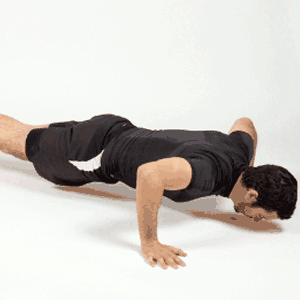
The wide grip push-up is like a standard push-up with your hands placed farther out. It focuses on the pectoral muscles and strengthens the shoulders and core.
Proper Form:
Start with a standard push-up position, keeping the spine neutral and back straight. Rest your hands on the floor and move them about two to three feet apart.
Next, lower yourself to the ground so that your elbows are around 45 degrees angle.
Then, press yourself back up to the standard push-up form.
2. Close Hands Push-up
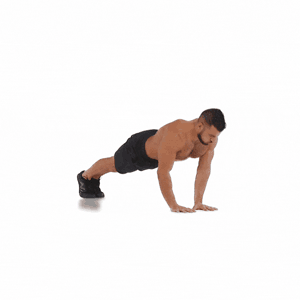
The close hands push-up is also related to the classic push-up. However, the hands are placed closer together. It works primarily on the triceps, chest, and shoulders and strengthens the core.
Proper Form:
Start with a standard push-up position, keeping the head, spine, and back aligned.
Bring hands closer so that the distance between them is reasonably narrow.
Next, lower your entire body to the ground, keeping your elbows closer to your body.
Then, press back up for more reps of the push-up movement.
3. Diamond Push-up
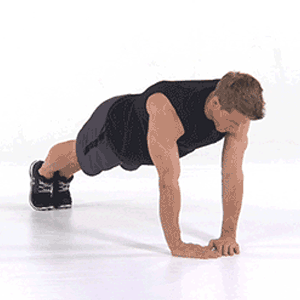
The diamond push-up is a more challenging variation of the basic push-up, with your hands placed on the ground with fingers forming a diamond shape. It helps build the triceps and the chest and also strengthens the core.
Proper Form:
Start in a standard push-up form, keeping your back straight, spine neutral, and legs together.
Next, move your hands inward, forming a 45-degree angle.
Make your index fingers and thumbs come in contact to create a triangle or diamond shape directly below your chest.
Next, lower your body to the ground, keeping your elbows tight next to your body.
Then, lift back up to the starting position.
4. Incline Push-ups
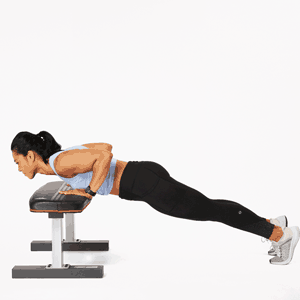
The incline push-up uses a bench or platform to give your upper body an extra height while doing a traditional push-up.
The change in weight distribution takes off some pressure in your shoulders to focus more on your triceps and lower chest area.
Proper Form:
Start by grabbing a bench or a platform. Do a standard push-up position with your hands on the elevated surface to make your upper torso higher than your lower body while maintaining your body's straight line.
Next, bend your elbows to lower your chest toward the bench.
Then, stretch out your arms to bring yourself back to the starting position.
5. Decline Push-ups
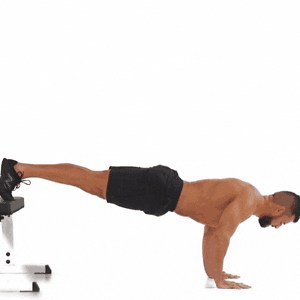
The decline push-up is a standard push-up variation that uses an elevated surface to position your lower body higher than your upper body.
It allows your body to work more on your front shoulders and upper chest.
Proper Form:
Start by placing a bench or a sturdy box behind. Kneel and rest your palms shoulder-width on the ground and elbows at a 45-degree angle.
Next, put your feet over the elevated surface to increase the height of your lower body. Keep your abs, glutes, and quads tight.
Then, lower your body to the ground, maintaining your head, neck, and back straight.
Finally, extend your elbows to push your body up and return to the starting position.
6. Clap Push-ups
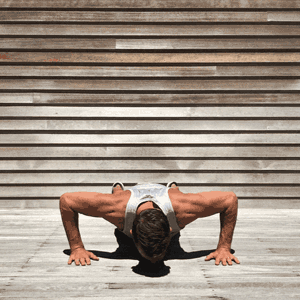
The clap push-up is done with a more upward thrust to make space for your hands to clap while suspended in the air. It helps develop triceps, shoulders and build chest strength.
Proper Form:
Start with a standard push-up position, keeping your head, back, hips, and knees straight.
Next, bend your arms to lower yourself and push up powerfully so that your hands can clap once below your chest a few inches above the ground.
Then, land on your hands with soft elbows and continue lowering your body towards the ground to regain force and repeat the upward push.
Make sure to maintain your back and hips straight throughout the exercise.
7. X-Tap Push-ups
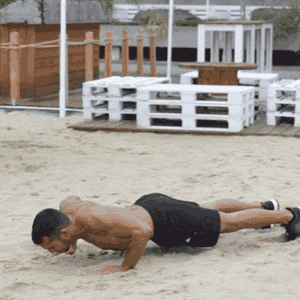
The X-Tap is a kind of Tap Push-Up that requires a whole-body strength move. It focuses on your arms and chest and building core strength.
Proper Form:
Start in a push-up form with hands shoulder-width apart. Extend your feet behind at hip-distance apart.
Next, bend your arms to lower your body, keeping your legs and abs tight.
Then, breathe deep as you push back up with more thrust so that your hands cross over your chest and tap the opposite shoulder simultaneously while being suspended in the air.
Finally, get your hands back on the ground and continue to lower your body to get more momentum to repeat the movement. Make sure to maintain your abs extra tight and body straight throughout the exercise.
8. Superman Push-up
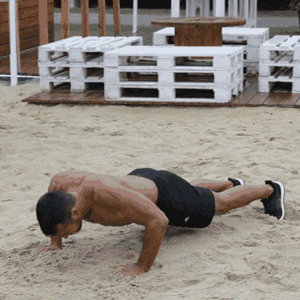
Superman push-ups are one type of flying push-ups that require more power and airtime. It helps strengthen your chest, arms, shoulders, and core muscles while improving your energy and endurance.
Proper Form:
Start in a standard push-up position, maintaining your body straight.
Next, bend your arms to lower your chest and blast your body up in the air with arms straight and feet fully extended and parallel to the ground, mimicking a flying Superman.
Maintain your back straight and your hips slightly lifted to increase momentum.
Then, land your hands back down in soft elbows and continue lowering your body to gain enough force to repeat the movement.
9. Archer Push-up
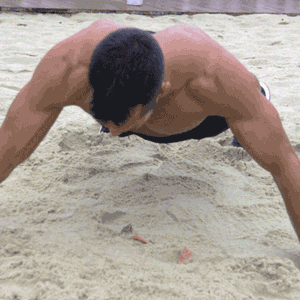
The archer push-up is a more complex version because it requires you to move your body weight up and down and side to side. It focuses on your chest while strengthening your triceps, shoulders, and core.
Proper Form:
Start with a standard push-up position with hands broader than the shoulders and about 45 degrees angle pointing outward. Keep your core tight, hips slightly elevated, and feet farther apart.
Next, lower yourself with elbows tucked and move your torso on one side so that your shoulder comes closer to your hand on the same side while the other arm stretches and becomes fully extended.
Then, push back up firmly to return to the starting position before shifting the weight on the other side. It's vital to go deeper with each rep to make it more effective. Focus on the quality of the movement instead of quantity.
"This is a hard exercise, so it can be tempting to rush each rep to get the set finished quickly, but you need to resist that temptation if you want to work the target muscles effectively."
– Sean Lerwill (Former Royal Marines Commando Officer & Physical Training Instructor)
10. One-Arm Push-ups
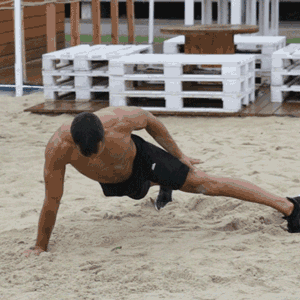
The one-arm push-up is a modified push-up that gives twice the entire weight of your body to a single arm. It primarily works on your pecs and stabilizes the core.
Proper Form:
Start in a standard push-up posture with one arm directly below the center of your chest.
Keep your feet more expanded and place your unweighted arm either behind your back or your thigh on the same side.
Next, slowly bend the weighted arm as you lower your body, keeping yourself in balance.
Then, push back up while maintaining your back straight and hips level to repeat the movement.
What Are Some Common Mistakes to Avoid?

These are some common mistakes you should be aware of:
- Improper neck and head posture. Poor head posture may put stress on your cervical spine, leading to prolonged neck and shoulder problems.
- Hip drop or hip sag. Middle sagging may add extra weight to the lower back, leading to back pains, disc herniations, and bulges.
- Locking elbows. Rigid upper arms place excessive strain on your joint that can further lead to serious injury.
- Hands too high above shoulder height. Putting your hands far too forward puts extra stress on your front shoulders and neck, as well as to your elbows and wrists, resulting in injury.
- Partial movements. Doing incomplete chest workout movements may limit you from maximizing the full benefit of a push-up workout.
According to a study published by the National Institutes of Health (NIH), to avoid these issues, it is important to maintain a neutral spine and focus on using the muscles in your arms and core to control movement [1]. This will help ensure that you are activating the intended muscles and reducing the risk of injury to your spine.
How Do Push-Ups Work To Build Chest Muscles?
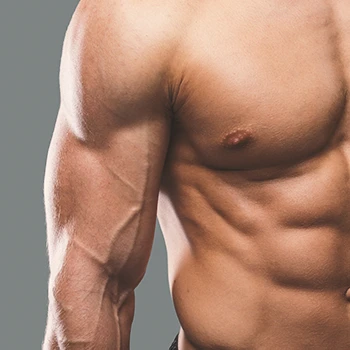
Push-ups are effective for building chest muscles by targeting the pectoralis major, increasing muscle size, and reducing chest fat while also engaging various upper body muscles for strength and endurance.
It further develops the size of the pectoralis major, the thick, triangular muscle that covers most of the chest wall.
Doing push-ups every day also tones your pecs which helps reduce chest fat resulting in an increased lean muscle mass.
Moreover, push-ups maintain the strength of your upper body by activating the muscles in your shoulders, arms, the "wing" muscles, and core to develop muscular power and endurance.
Also after a workout, when the anabolic window is open, whey proteins provide your body with needed macronutrients. Our guide on the top whey protein powders can help you choose the one that's right for you.
What are the Benefits Of Push-Up Variations?
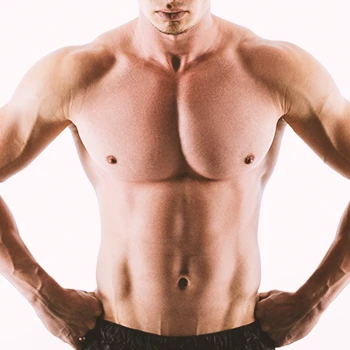
Push-up variations offer a wide range of benefits, including adjusting difficulty levels, targeting specific muscle groups, and shifting workout goals.
Through variations of the push-up, you can do the following: Adjust the difficulty level. You can increase or decrease the intensity of the exercise.
Choose the muscle to work on. You can train the entire upper body or concentrate on a specific muscle part that you want to develop.
Shift your goals. You can adjust the dynamics to work on one or more intentions, such as strength, flexibility, endurance, or increase in muscle size.
Even if you have little time to do push-ups, you can anticipate your output by adjusting the difficulty, focusing on the right muscles, and shifting your movements to meet your fitness goals.
Does Observing A "Straight Line" Body Alignment Help Achieve A Perfect Push Up?

Yes, maintaining a straight-line body alignment is essential for achieving a perfect push-up and ensuring a safe and effective workout.
Maintaining a neutral spine and straight back during push-ups promotes a safe workout by reducing pressure and preventing injuries on the spine [2].
Also, proper alignment of the neck, head, shoulders, spine, hips, knees, and ankles increases your workout performance resulting in faster and more effective strength building.
Are There Easy Push-Up Modifications For Beginners?
Yes, there are several easy push-up modifications for beginners that can help you build strength and improve your form.
The push-up variations for beginners are like the basic push-up done in a more comfortable position. It may look simple, but it serves as a perfect workout to develop muscle strength and core activation, for starters.
Some modified push-ups for beginners include:
- Wall Push-ups
- Seated Push-ups
- Kneeling Push-ups
Like other variations, you can do these even without going to the gym or using any equipment.
References:
- www.ncbi.nlm.nih.gov/pmc/articles/PMC9658261/
- https://pubmed.ncbi.nlm.nih.gov/28684196/
About The Author
You May Also Like



